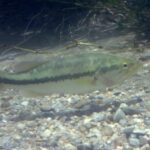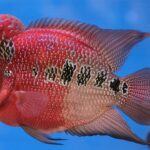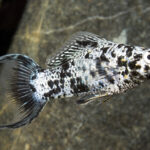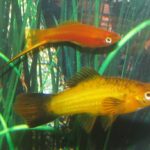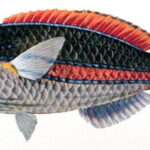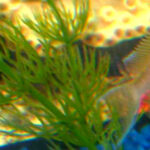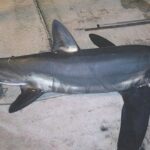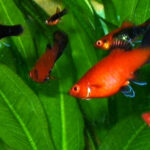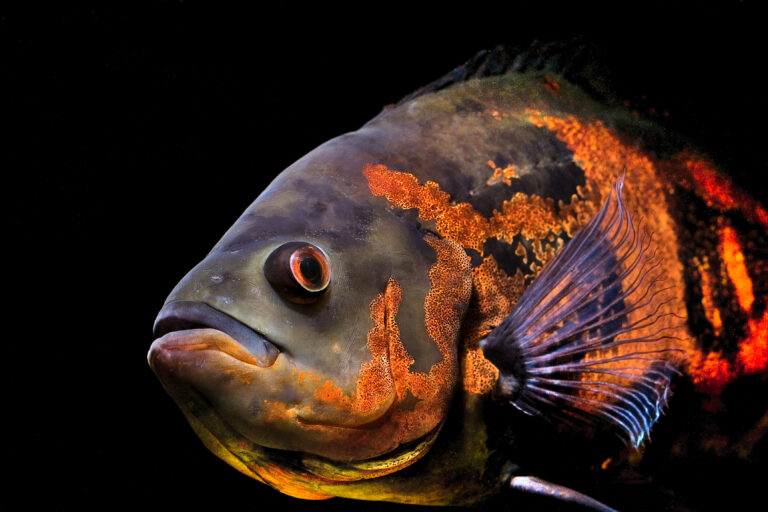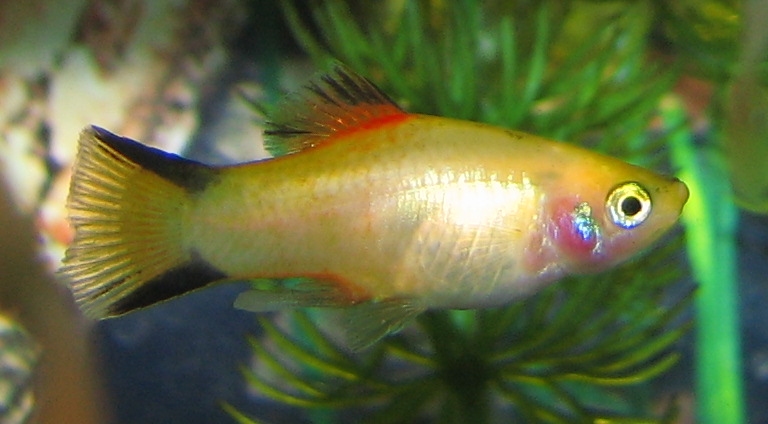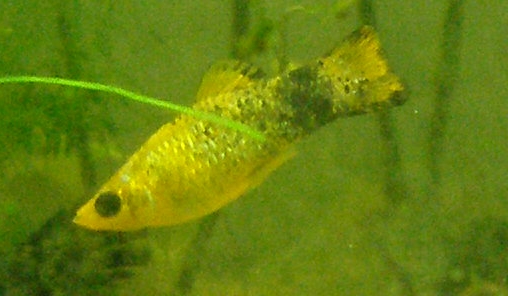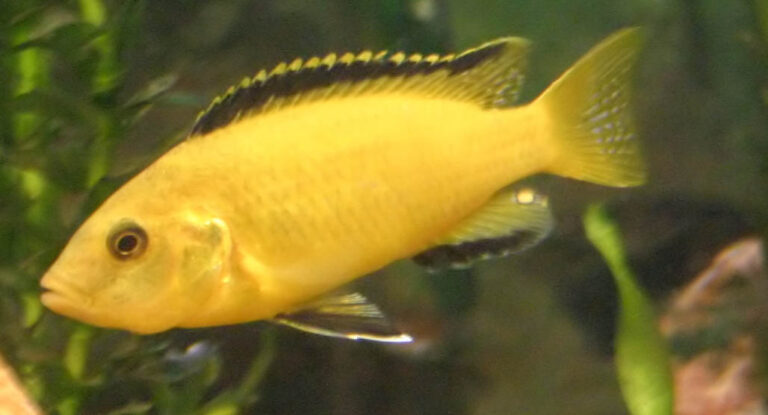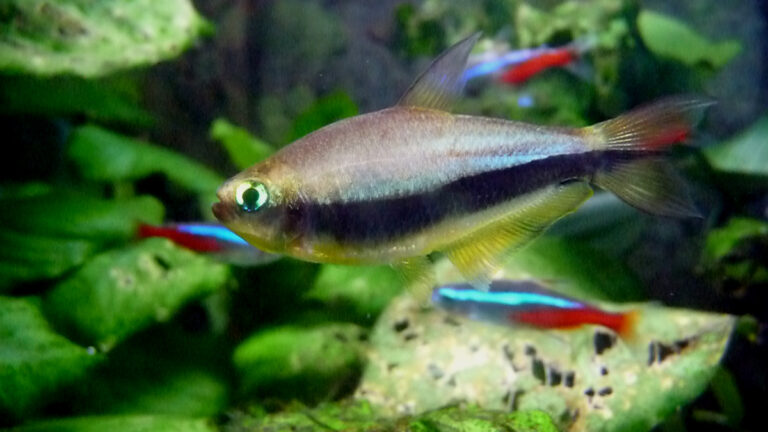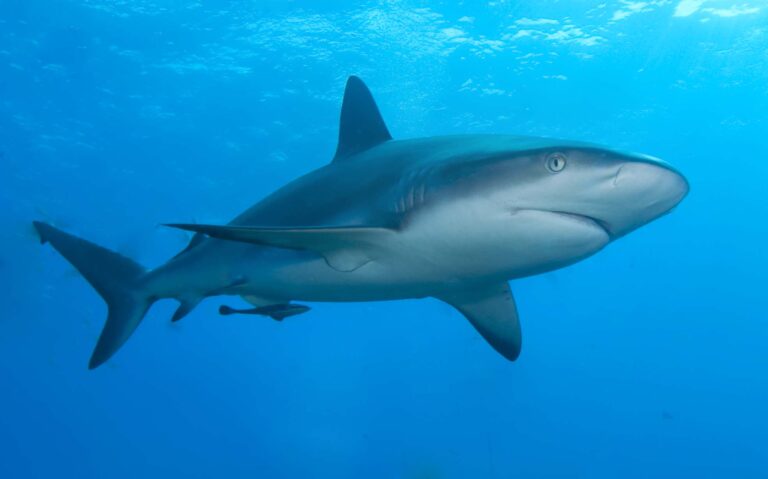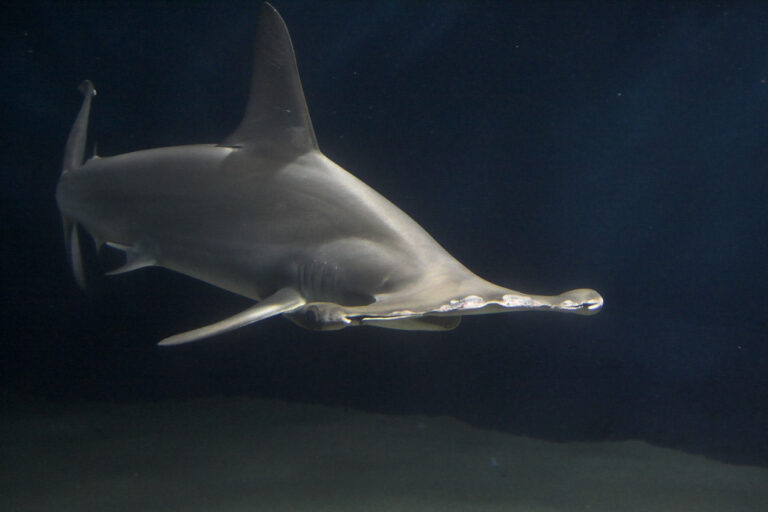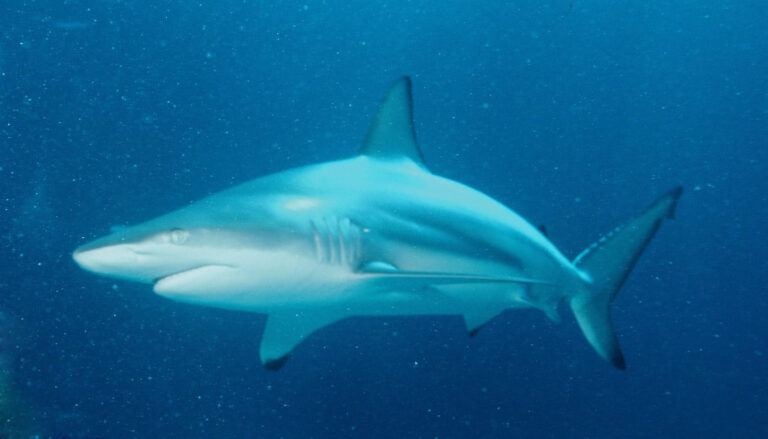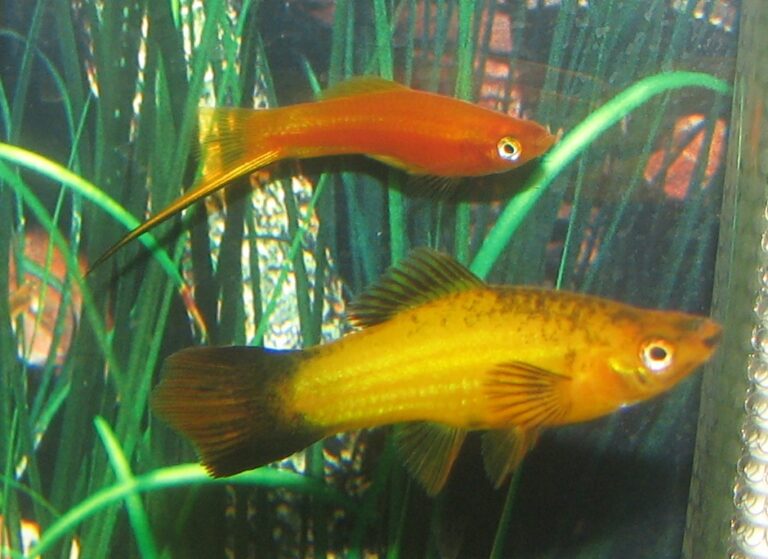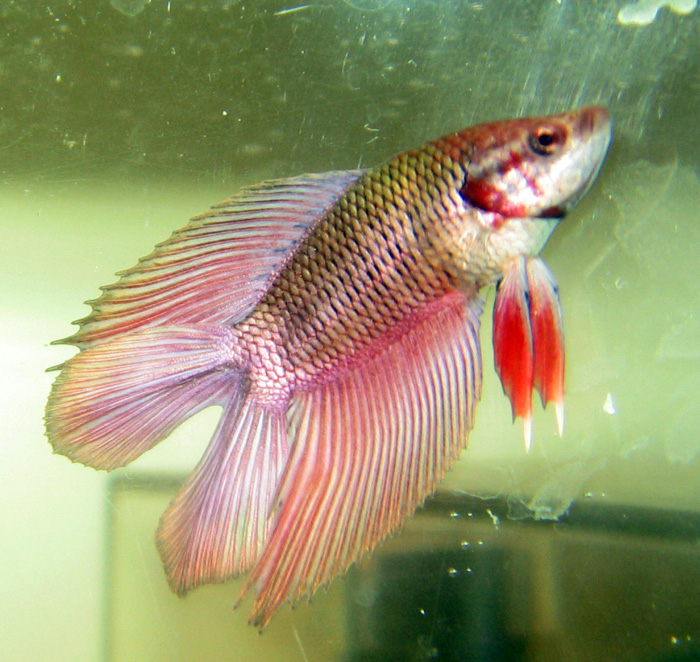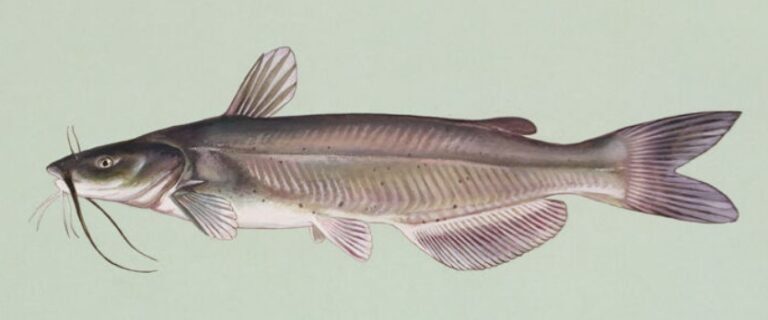Lionhead Goldfish
By Ryan Maron | Last Modified: June 29, 2025
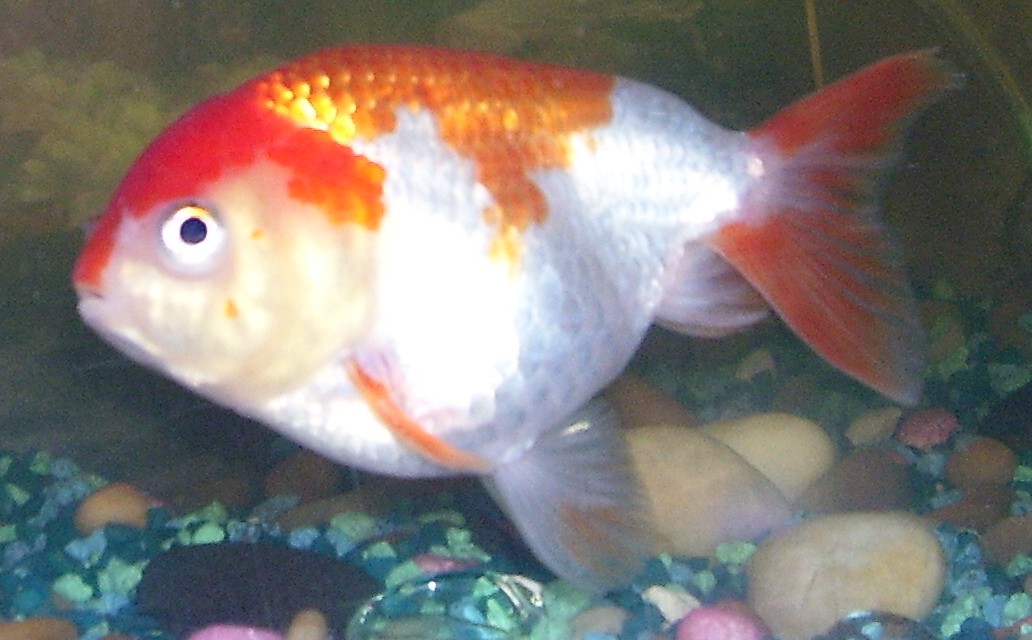
The Lionhead Goldfish represents one of the most distinctive and cherished ornamental varieties within the goldfish family, captivating aquarists worldwide with its unique cranial development and elegant swimming patterns. Known scientifically as Carassius auratus, this particular cultivar belongs to the fancy goldfish group and stands apart from its relatives through the prominent fleshy growth, or wen, that develops across its head region. This remarkable breed originated in China during the Ming Dynasty and has since become a cornerstone species in ornamental fishkeeping, contributing significantly to the global aquarium trade valued at over $15 billion annually.
The ecological significance of the Lionhead Goldfish extends beyond its ornamental appeal, as it serves as an important model organism for studying selective breeding practices, genetic expression in aquatic species, and the adaptation of domesticated fish to various aquatic environments. Within captive ecosystems, these fish function as efficient omnivorous feeders, contributing to nutrient cycling while requiring carefully balanced water parameters to maintain their distinctive physiological characteristics.
| Feature | Details |
| Common Name | Lionhead Goldfish |
| Scientific Name | Carassius auratus |
| Family | Cyprinidae |
| Typical Size | 12-20 cm (5-8 inches), 150-300 grams |
| Habitat | Freshwater aquariums, ornamental ponds |
| Diet | Omnivorous – plants, insects, small crustaceans |
| Distribution | Captive populations worldwide |
| Conservation Status | Least Concern (domesticated variety) |
Taxonomy & Classification
The Lionhead Goldfish belongs to the family Cyprinidae, which encompasses over 3,000 species of freshwater fish commonly known as carps and minnows. Within this extensive family, Carassius auratus represents the foundational species from which all goldfish varieties have been developed through centuries of selective breeding. The taxonomic hierarchy places the Lionhead Goldfish within the order Cypriniformes, class Actinopterygii, and phylum Chordata.
Genetic analysis reveals that the distinctive wen formation characteristic of Lionhead Goldfish results from specific allelic expressions affecting cranial tissue development. These morphological modifications represent phenotypic variations rather than distinct subspecies classifications, maintaining the same genetic foundation as other goldfish varieties. The breed’s development traces back to Chinese aquaculturists during the 1400s, who systematically selected specimens displaying enlarged cranial growths.
Modern taxonomists recognize multiple cultivar groups within Carassius auratus, with the Lionhead classification falling under the fancy goldfish category alongside Orandas, Ryukins, and Telescopes. The International Goldfish Society maintains breeding standards that define authentic Lionhead characteristics, including specific wen development patterns, body proportions, and fin configurations that distinguish this variety from related ornamental forms.
Physical Description
The most distinguishing feature of the Lionhead Goldfish is the prominent wen, a fleshy cranial growth that develops gradually as the fish matures. This raspberry-like formation covers the entire head region, extending from above the eyes to the gill covers, creating the distinctive hooded appearance that gives the breed its common name. The wen consists of specialized adipose tissue that continues growing throughout the fish’s lifetime, reaching maximum development between 18 to 24 months of age.
Body structure in Lionhead Goldfish displays characteristic modifications typical of fancy goldfish varieties. The dorsal profile exhibits a pronounced arch, creating an egg-shaped silhouette when viewed laterally. Adult specimens typically measure 12 to 20 centimeters in total length, with exceptional individuals reaching 25 centimeters under optimal conditions. Body depth often equals 60 to 70 percent of standard length, contributing to the breed’s distinctive rounded appearance.
Fin configuration represents another defining characteristic, as authentic Lionhead Goldfish completely lack dorsal fins. This absence creates a smooth back profile that emphasizes the wen development and overall body curvature. The caudal fin displays a divided structure with rounded lobes, while pectoral and pelvic fins maintain standard goldfish proportions. Coloration varies extensively, ranging from traditional orange and red patterns to white, black, blue, chocolate, and calico combinations, with color intensity influenced by genetic factors, diet, and environmental conditions.
Habitat & Distribution
Lionhead Goldfish exist exclusively within human-maintained aquatic environments, having been developed through centuries of captive breeding programs. Their distribution spans globally wherever ornamental fishkeeping occurs, with significant populations concentrated in Asia, North America, Europe, and Australia. These fish demonstrate remarkable adaptability to various freshwater conditions, thriving in temperature ranges from 18 to 24 degrees Celsius, though they can tolerate temporary fluctuations between 10 to 30 degrees Celsius.
Optimal habitat parameters for Lionhead Goldfish include neutral to slightly alkaline water conditions with pH values ranging from 6.5 to 8.0. Water hardness preferences fall between 5 to 15 dGH, while dissolved oxygen levels should maintain concentrations above 6 mg/L for proper respiratory function. The absence of wild populations reflects the breed’s complete dependence on human care, as their modified physiology and reduced swimming efficiency would compromise survival in natural aquatic ecosystems.
Captive environments range from small residential aquariums to large-scale ornamental ponds and commercial breeding facilities. Indoor aquarium systems typically require minimum volumes of 150 liters per adult specimen, while outdoor pond installations offer superior growth potential and natural behavioral expression. Water circulation systems prove essential for maintaining adequate oxygenation, as the Lionhead’s compressed gill structure can limit respiratory efficiency under stagnant conditions.
Diet & Feeding Behavior
Lionhead Goldfish exhibit omnivorous feeding patterns characteristic of their Cyprinidae ancestry, consuming both plant and animal matter in balanced proportions. Their natural foraging behavior involves systematic exploration of substrate surfaces, using specialized pharyngeal teeth to process various food items. The modified cranial structure affects feeding mechanics, as the enlarged wen can partially obstruct vision and alter food acquisition strategies compared to standard goldfish varieties.
Primary dietary components include aquatic vegetation, algae, small invertebrates, insect larvae, and organic detritus. In captive environments, commercial goldfish pellets provide essential nutritional balance, while supplementary foods such as blanched vegetables, bloodworms, brine shrimp, and daphnia enhance dietary variety. Feeding frequency requires careful regulation, with adult specimens receiving 2 to 3 small meals daily to prevent digestive complications and maintain water quality.
Specialized feeding considerations for Lionhead Goldfish include food particle size adaptation and feeding location accessibility. The wen development can interfere with surface feeding, making sinking pellets more suitable than floating varieties. Feeding behavior studies indicate that Lionhead Goldfish demonstrate reduced competitive feeding compared to streamlined goldfish varieties, often requiring protected feeding areas in community aquarium settings to ensure adequate nutrition.
Behavior & Adaptations
Lionhead Goldfish display distinctive behavioral patterns influenced by their morphological modifications and centuries of selective breeding. Swimming mechanics differ significantly from wild-type goldfish, as the absence of dorsal fins and compact body structure create unique locomotion challenges. These fish compensate through enhanced pectoral fin movements and modified body undulation patterns, though overall swimming speed remains considerably reduced compared to streamlined varieties.
Social behavior in Lionhead Goldfish reflects peaceful temperaments suitable for community aquarium environments. They demonstrate schooling tendencies when maintained in groups, though their reduced mobility can affect group dynamics during feeding periods or territorial disputes. Territorial behavior remains minimal, with most aggressive interactions limited to breeding season activities or competition for preferred feeding locations.
Cognitive adaptations include enhanced memory capabilities for recognizing feeding schedules, caretaker identification, and spatial navigation within familiar environments. Research indicates that Lionhead Goldfish can retain learned behaviors for several months and demonstrate problem-solving abilities when presented with food acquisition challenges. Temperature-responsive behavior patterns show increased activity during warmer periods and reduced metabolism during cooler months, though extreme temperature fluctuations can stress their modified physiological systems.
Reproduction & Life Cycle
Reproductive behavior in Lionhead Goldfish follows seasonal patterns typical of temperate freshwater species, with breeding activities typically occurring during spring months when water temperatures rise above 18 degrees Celsius. Sexual maturity develops between 8 to 12 months of age, though optimal breeding condition often requires 18 to 24 months for full development. Males develop distinctive breeding tubercles along the gill covers and pectoral fin rays during spawning season, while females display increased abdominal girth when gravid.
Spawning behavior involves elaborate courtship rituals where males pursue females through aquatic vegetation or artificial spawning media. The breeding process culminates with females releasing 2,000 to 4,000 adhesive eggs over shallow substrate areas, immediately followed by male fertilization. Egg development requires 4 to 7 days at optimal temperatures of 20 to 22 degrees Celsius, with hatching success rates influenced by water quality parameters and parental genetic factors.
Larval development progresses through several distinct phases, beginning with a 2 to 3 day yolk sac absorption period followed by free-swimming fry stages. Young Lionhead Goldfish initially display streamlined body shapes resembling common goldfish, with characteristic wen development beginning around 3 to 4 months of age. Growth rates vary considerably based on genetic potential, feeding regimens, and environmental conditions, with most specimens reaching adult size within 12 to 18 months under optimal care conditions.
Predators & Threats
Within captive environments, Lionhead Goldfish face limited predation pressure compared to wild fish populations, though several threats can compromise their welfare and survival. Larger aquarium inhabitants such as aggressive cichlid species, large catfish, or predatory turtles may pose direct threats to smaller Lionhead specimens. The breed’s reduced swimming ability makes them particularly vulnerable to pursuit predation, necessitating careful species selection in community aquarium settings.
Disease susceptibility represents a primary threat category for Lionhead Goldfish, with their modified anatomy creating specific health vulnerabilities. The enlarged wen tissue proves prone to bacterial infections, fungal growth, and parasitic infestations, particularly when water quality parameters deteriorate. Swim bladder disorders occur frequently due to compressed internal anatomy, while gill structure modifications can reduce respiratory efficiency under stressful conditions.
Environmental stressors include temperature fluctuations, water quality degradation, and inadequate filtration systems that fail to maintain optimal living conditions. Overfeeding represents a common husbandry threat, leading to digestive complications, water pollution, and increased disease susceptibility. Improper handling during transport or maintenance activities can cause physical injury to the delicate wen tissue, potentially resulting in permanent disfigurement or secondary infections.
Conservation Status
The conservation status of Lionhead Goldfish differs fundamentally from wild fish species, as this variety exists exclusively through human intervention and captive breeding programs. The International Union for Conservation of Nature (IUCN) does not assign conservation categories to domesticated animal varieties, though the foundational species Carassius auratus maintains a “Least Concern” classification in its natural range throughout East Asia.
Genetic diversity preservation represents the primary conservation concern for Lionhead Goldfish populations, as intensive selective breeding can reduce genetic variability and increase susceptibility to hereditary disorders. Professional breeding programs maintain detailed lineage records and implement outcrossing strategies to preserve genetic health while maintaining breed characteristics. International goldfish societies collaborate on breeding standards and genetic management protocols to ensure long-term population viability.
Commercial breeding operations worldwide maintain millions of Lionhead Goldfish annually, ensuring species continuity through market demand and hobbyist interest. However, concerns arise regarding genetic bottlenecks in certain color varieties and the potential loss of rare genetic lines due to changing market preferences. Conservation efforts focus on maintaining breeding stock diversity and documenting genetic lineages to prevent irreversible genetic losses within this specialized goldfish variety.
Human Interaction
Human interaction with Lionhead Goldfish spans over six centuries, beginning with Chinese aquaculturists who first developed this distinctive variety through systematic selective breeding programs. The relationship between humans and these ornamental fish represents one of the most successful examples of aquaculture domestication, creating a global industry that supports millions of aquarists, breeders, and related businesses worldwide.
Economic significance extends throughout multiple sectors, including commercial breeding facilities, retail aquarium trade, equipment manufacturing, and specialized fish food production. The global ornamental fish market, valued at approximately $15 billion annually, relies heavily on established varieties like the Lionhead Goldfish to maintain consumer interest and market stability. Professional breeding operations in Asia produce millions of specimens annually for international export, supporting local economies and traditional breeding expertise.
Cultural importance varies significantly across different regions, with Lionhead Goldfish holding particular significance in Asian cultures where they symbolize prosperity, good fortune, and artistic achievement. Educational applications include their use in biology classrooms for studying genetics, selective breeding principles, and aquatic ecosystem dynamics. Therapeutic applications have emerged through animal-assisted therapy programs, where caring for Lionhead Goldfish provides stress reduction and emotional benefits for participants across various age groups and therapeutic settings.
Interesting Facts
The distinctive wen formation in Lionhead Goldfish continues growing throughout the fish’s entire lifespan, potentially reaching proportions that require periodic trimming in extreme cases to prevent vision obstruction or feeding difficulties. This unique characteristic results from genetic mutations affecting cranial tissue development, with the growth rate influenced by factors including diet, water temperature, and individual genetic expression patterns.
Longevity records for Lionhead Goldfish demonstrate remarkable potential lifespans extending beyond 20 years under optimal care conditions, though average captive lifespans typically range from 8 to 12 years. The oldest documented specimen lived to 25 years, maintained in a temperature-controlled indoor aquarium with consistent water quality management and specialized dietary protocols throughout its life.
Sensory adaptations in Lionhead Goldfish include enhanced lateral line sensitivity that compensates for vision limitations caused by wen development. This heightened mechanoreception allows them to detect water movement patterns, locate food sources, and navigate complex environments despite visual obstructions. Some specimens develop specialized feeding behaviors, including bottom-grazing techniques and tactile food location methods that maximize feeding efficiency within their physical constraints.
Color development in Lionhead Goldfish can continue changing throughout their lives, with some specimens displaying dramatic color shifts from juvenile to adult stages. Environmental factors such as lighting conditions, diet composition, and water chemistry can influence pigmentation intensity, while genetic factors determine the potential color patterns available for expression in each individual specimen.
Frequently Asked Questions
How large do Lionhead Goldfish typically grow in home aquariums?
Lionhead Goldfish typically reach 12 to 20 centimeters (5 to 8 inches) in length when maintained in appropriately sized aquarium systems. Growth potential depends significantly on tank volume, water quality, feeding regimens, and genetic factors. Specimens kept in larger aquariums or pond environments often achieve greater maximum sizes than those confined to smaller spaces, with some exceptional individuals reaching 25 centimeters under optimal conditions.
What water temperature range is optimal for Lionhead Goldfish health?
The optimal temperature range for Lionhead Goldfish falls between 18 to 24 degrees Celsius (64 to 75 degrees Fahrenheit), though they can tolerate temporary fluctuations from 10 to 30 degrees Celsius. Consistent temperatures within the preferred range promote healthy metabolism, immune function, and wen development. Rapid temperature changes should be avoided, as they can stress the fish’s modified physiological systems and increase disease susceptibility.
Can Lionhead Goldfish be kept with other fish species safely?
Lionhead Goldfish can coexist peacefully with other non-aggressive freshwater species that share similar temperature and water quality requirements. Ideal tankmates include other fancy goldfish varieties, white cloud mountain minnows, and peaceful catfish species. However, their reduced swimming ability makes them vulnerable to harassment from faster, more aggressive fish, and their feeding requirements may conflict with competitive species during meal times.
How often should Lionhead Goldfish be fed, and what foods are recommended?
Adult Lionhead Goldfish should receive 2 to 3 small meals daily, with feeding amounts that can be consumed within 2 to 3 minutes to prevent overfeeding and water quality issues. High-quality sinking goldfish pellets serve as the primary diet, supplemented with blanched vegetables, bloodworms, brine shrimp, and daphnia. The sinking food format accommodates their feeding limitations caused by wen development and reduces surface feeding competition.
Conclusion
The Lionhead Goldfish stands as a remarkable testament to centuries of selective breeding expertise, representing both the artistic achievement of aquaculture development and the successful domestication of an aquatic species. Their unique cranial modifications and peaceful temperament have secured their position as one of the most cherished ornamental fish varieties worldwide, contributing significantly to the global aquarium trade while providing educational and therapeutic benefits across diverse human communities. As captive populations continue thriving under human care, the preservation of genetic diversity and breeding expertise remains essential for maintaining this distinctive goldfish variety for future generations of aquarists and researchers.
Share The Article:
More Fish Species:
-
Oscar Fish
The Oscar Fish (*Astronotus ocellatus*) stands as one of South America’s most recognizable freshwater cichlids, earning widespread recognition both…
-
Platy Fish
The Platy Fish, scientifically known as Xiphophorus maculatus, represents one of the most popular and widely distributed freshwater aquarium…
-
Balloon Molly
The Balloon Molly (*Poecilia latipinna* var.) represents one of the most distinctive and popular ornamental fish varieties in the…
-
Yellow Lab Cichlid
The Yellow Lab Cichlid (*Labidochromis caeruleus*) stands as one of Africa’s most recognizable freshwater fish species, distinguished by its…
-
Emperor Tetra
The Emperor Tetra (*Nematobrycon palmeri*) stands as one of the most distinctive and sought-after freshwater fish species in the…
-
Caribbean Reef Shark
The Caribbean Reef Shark (*Carcharhinus perezi*) stands as one of the most recognizable and ecologically significant predators patrolling the…
Discover
-
Hammerhead Shark
The Hammerhead Shark represents one of the most distinctive and fascinating apex predators in marine ecosystems worldwide. These remarkable…
-
Offshore Swordfish fishing: Night Techniques and Premier Gear
The first time I ventured into the darkness 30 miles offshore of Key West for swordfish, I was woefully…
-
Best Fishing Line for Bass in 2025: What Actually Works
I still remember the day I lost that monster largemouth on Lake St. Clair back in 2019. The fish…
-
How to Fish a Jellyfish: Safe Methods & Expert Tips
Jellyfish fishing is a specialized niche within the broader world of angling that requires unique techniques, specific knowledge, and…
-
Blacktip Shark
The Blacktip Shark (Carcharhinus limbatus) stands as one of the most recognizable and ecologically significant predators in tropical and…
-
Mastering Fishing Casting Techniques: Complete Guide
Have you ever watched someone cast their line with perfect precision while you struggle to avoid tangling yours in…
Discover
-
Pineapple Swordtail
The Pineapple Swordtail (*Xiphophorus hellerii* var. pineapple) represents one of the most striking color variants of the common swordtail,…
-
Double Tail Betta
The Double Tail Betta, scientifically known as Betta splendens, represents one of the most distinctive and captivating variants within…
-
Best Fishing Spots in California: Lakes, Rivers, and Coastal Hotspots
California fishing has always struck me as a study in beautiful contradictions. From snow-fed alpine lakes to sweltering desert…
-
Best Saltwater Fishing Rigs in 2025
As someone who’s spent over three decades casting lines into just about every body of water I could find,…
-
Channel Catfish
The Channel Catfish stands as one of North America’s most recognizable and economically important freshwater fish species. Known scientifically…
-
Shore Fishing for Beginners: 5 Odd Techniques That Actually Work
I’ve spent more mornings than I can count standing on the shores of Michigan lakes watching boats drift by,…


